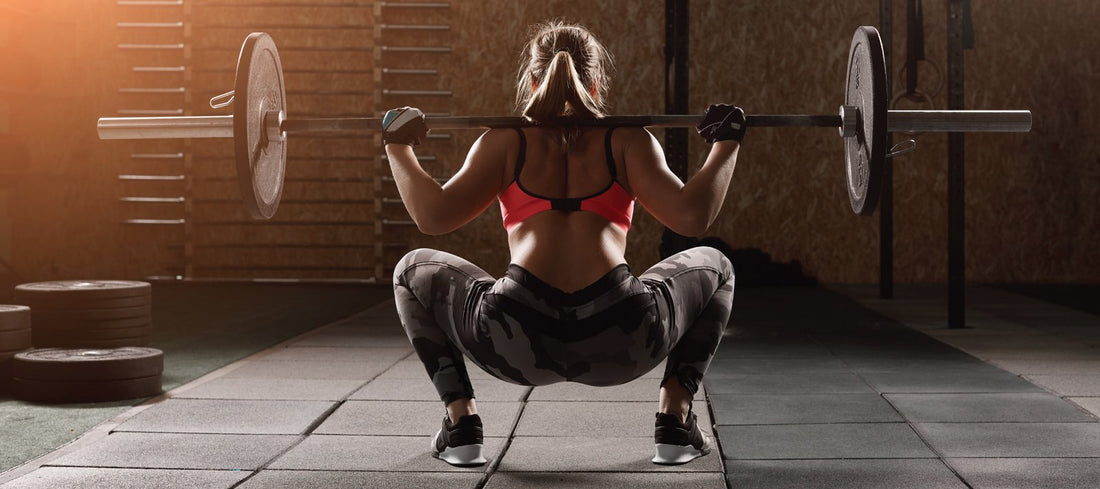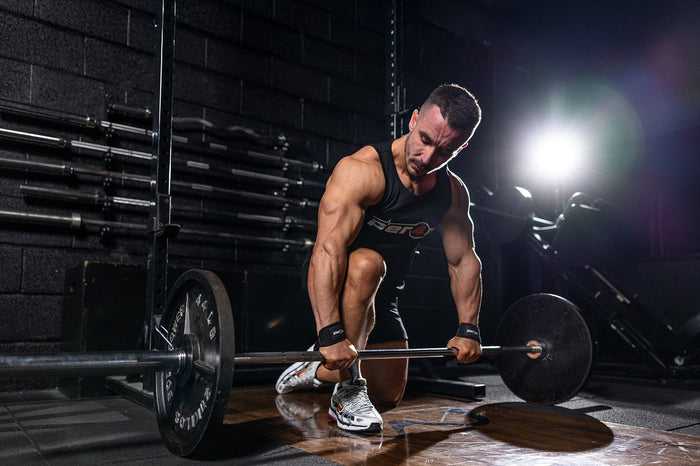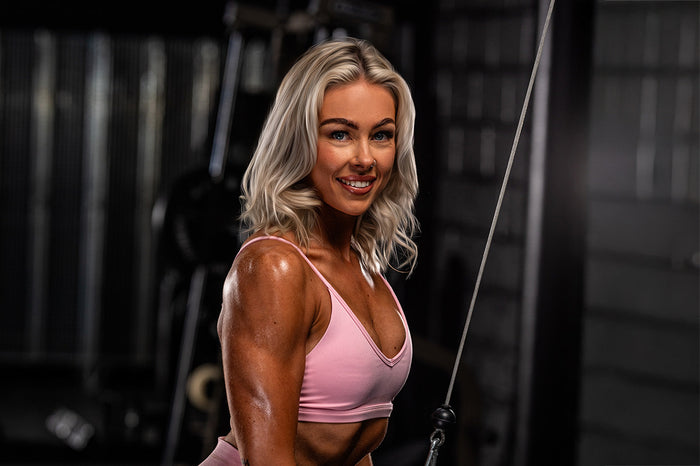One of the most widely debated topics in the world of exercise and fitness is the age-old question of ‘how low should you squat?’. With so much conflicting advice from trainers, the web and the ‘expert exerciser’ in your local gym, it can leave you confused and ready to give up (maybe that’s why so many people head for the chest press machine!).

I’m sure you’ve all been told (or possibly had screamed at you!) to get your ‘ass to grass’, only for someone else to tell you ‘not go past 90 degrees’ to minimise injury (with the implication that if you went a degree past 90, your knees would disintegrate!). So, how do you know who to listen to, and which is the best type of squat?!
Considering this is a movement so natural to humans, why is it that we can’t come to a universal conclusion? On one side of the argument you have those that treat bending the knees past 90 degrees as if you were going fall off the edge of the earth. On the flip side you have the camp that would rather see you go home than to not have your hamstrings getting familiar with your calves.
What the science says…
Both arguments have their supporters with various research showing that squatting past 90 degrees increases the risk of muscle and joint damage, and of course lots of other research showing no effects on injury reduction. Likewise, there are studies demonstrating greater gains from ‘full squats’ and others showing no difference or an increased risk of injury.
For example, Williams argues that the risks of deep squatting outweigh the potential benefits, highlighting the increased risk of injury and that peak muscle activity does not seem to increase past 90 degrees (Schoenfeld & Williams, 2012).
Which in part is supported by research such as da Silva, et al. (2017) claiming that the partial back squat maximises muscle activation, but is then challenged by studies like Kubo, et al. (2019), that suggest full squat training is more effective for developing the lower limb muscles.
Others like Drinkwater, et al. (2012) sit on the fence, recommending that a variety of squat depths and loads should be prescribed depending on the individual athlete’s muscle characteristics and training goals, then others like Clark, et al. (2012) contradict themselves stating that “it is generally believed that a squat depth to parallel is most effective for improving athletic performance” then later summarising that “muscle activation is not different in squats to varying depths at moderate loads”.
Supporters of deep squats like Comfort & Kasim (2007) concluded that the optimal squat technique to minimise injury and gain maximal muscle activation was a full depth squat and claim it is in fact a necessity if you use cleans or snatches within your training – providing you maintained the lordotic curve; with Kim, et al. (2015) also highlighting ankle dorsiflexion as a limiting factor in the ability to squat deep safely.
Hartmann, et al. (2013) also argued that as long as technique is accurate and supervised by experts, that deep squats are an effective training exercise for the protection against injuries and help strengthen the lower body.
So, which squat is best?
Well, both arguments have hit upon part of the answer. They are both concerned with range of movement – one focussed on limiting the range to reduce injury, the other to develop the muscles through the full range of movement. The problem with these views stem from the fact that a squat is simply a collection of movements at the hip, knee and ankle joints and everyone’s anatomy will vary slightly. So, it isn’t actually the depth of the squat that matters, it is the range of movement that the you can perform with correct technique, that will determine gains in strength and reduction of injury. Obviously, this range can be developed, but the principle that it’s your ROM (not the depth of the squat) that will determine your strength gains, will always hold true.
If you want to get the maxim gains from your performance, what you should be focussed on is your technique in relation to your current ROM. Take a look below to see when it starts to go wrong (obviously the more flexible you are, the deeper you will be able to squat before your technique begins to slip):
 |
|

|
|
 |
|
Key takeaways:
Accept your starting point
You are where you are, don’t be tempted to pretend you are more flexible/strong/powerful than you actually are, this is a sure fire way to slow your gains and increase your risk of injury… check your ego at the door!
Squat to YOUR full range of movement
Squat to the point that you can maintain the natural soft S-shaped curve of the spine – you might find it useful to ask a partner/personal trainer to help you decide when this is or take a few photos to mark the spot.
Play the long game
If you want to go deeper, then you need to be patient and work on the flexibility of your hamstrings, glutes, gastrocnemius (calves) and if you have a stiff back, your trunk flexibility too, but that’s for another day!
References
Clark, D. R., Lambert, M. I. & Hunter, A. M., 2012. Muscle Activation in the Loaded Free Barbell Squat: A Brief Review. Journal of Strength and Conditioning Research, 26(4), pp. 1169-1178.
Comfort, P. & Kasim, P., 2007. Optimizing Squat Technique. Strength and Conditioning Journal, 29(6), pp. 10-13.
da Silva, J. J. et al., 2017. Muscle Activation Differs Between Partial and Full Back Squat Exercise With External Load Equated. The Journal of Strength and Conditioning Research, 31(6), pp. 1688-1693.
Drinkwater, E. J., Moore, N. R. & Bird, S. P., 2012. Effects of Changing from Full Range of Motion to Partial Range of Motion on Squat Kinetics. Journal of Strength and Conditioning Research, 26(4), pp. 890-896.
Hartmann, H., Wirth, K. & Klusemann, M., 2013. Analysis of the Load on the Knee Joint and Vertebral Column with Changes in Squatting Depth and Weight Load. Sports Med, Volume 43, pp. 993-1008.
Kim, S.-H.et al., 2015. Lower Extremity Strength and the Range of Motion in Relation to Squat Depth. Journal of Human Kinetics, Volume 45, pp. 59-69.
Kubo, K., Ikebukuro, T. & Yata, H., 2019. Effects of squat training with different depths on lower limb muscle volumes. European Journal of Applied Physiology, Volume 119, pp. 1933-1942.
Schoenfeld, B. & Williams, M., 2012. Are Deep Squats a Safe and Viable Exercise. Strength and Conditioning Journal, 34(2), pp. 34-36.



